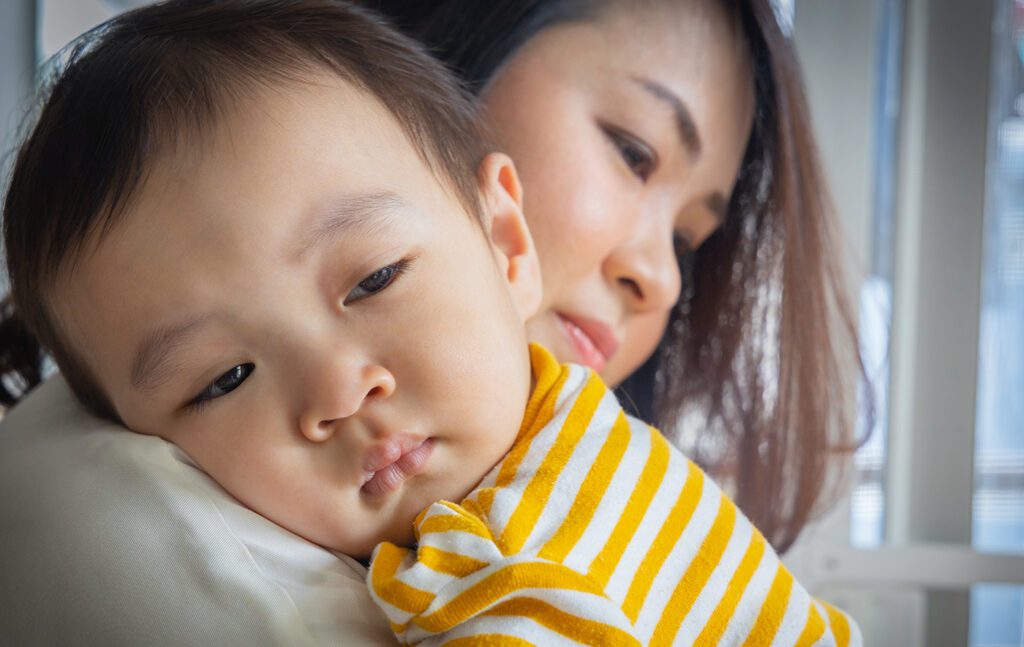It may be OCD
| If you’re worried about drowning your baby in the bath, it may be a sign that you have Harm OCD. Here’s what that means: Harm OCD is a common subtype of OCD that causes intrusive unwanted thoughts, images or urges to harm oneself or others. The thoughts or images may present suddenly and without warning which is highly distressing to the individual. In order to reduce the stress caused by intrusive thoughts or images, individuals with OCD will engage in compulsive behaviors such as avoiding being alone with their baby, checking their own reactions when around their baby to see how they really feel and arguing with their thoughts to prove to themselves they would never do something harmful.These compulsive behaviors provide a short term relief to their intrusive thoughts however in individuals with OCD the doubt will continue to exist and lead to ongoing distress. For example, you may be bathing your baby and have the intrusive thought, “what if I held them under the water” or “what if I leave them alone in the bathtub to drown.” You then may feel highly anxious and fearful so you quickly call out to your partner to join you in the bathroom so you’re not alone with your baby. You may find yourself trying to make sense of this thought and wonder if you are a bad parent for having the thought. You seek reassurance from your partner that you act safely around the baby and have not engaged in any concerning behaviors. They reassure you that everything is ok so you try to move forward. Now, any time you are bathing your baby you can’t shake the unwanted thoughts and feelings that could cause harm to your baby. This is an example of how Harm OCD related to drowning your baby can look like however there are many other types of intrusive thoughts and behavior responses that can occur. OCD is when you have doubts that won’t go away even despite the individual’s best efforts. Many individuals with OCD tend to believe that their obsessive thoughts are their own real thoughts and therefore are important and must be listened to, rather than being intrusive and something they cannot control. |
What if I’m a bad person?
| Intrusive thoughts caused by OCD are ego dystonic, meaning they are not in line with who we are or what we believe. OCD goes after what you care about the most and tries to alert you to any and all potential dangers. The important thing to know however is OCD is an overestimation of the threat or actual risk and cannot register the difference between a perceived threat and an actual threat. This means having a thought about drowning your baby and actually drowning your baby feels as if they are the same however when we step back and look at the two we will find, one being a thought and the other being an action. It can make sense for a parent to initially feel a lot of guilt, shame and fear when having intrusive thoughts about harming their child as they believe that these thoughts will mean that they will someday act on them or increase the likelihood they will cause harm. This is not uncommon in OCD and is referred to as thought action fusion. Thought action fusion is the belief that thinking something is just as bad as committing the action themselves. Therefore many parents will perceive themselves as a bad parent just for having the thought. Knowing, however, that OCD attacks what the individual values the most and is an overestimation of the perceived threat helps the individual with OCD learn that thoughts are just thoughts and when we one practices non-engagement responses towards their thoughts, the brain can learn there is no danger or threat. Additionally, learning to recognize that feelings are not facts so just because something feels it could be true does not necessarily mean it is. |
How to treat fears about drowning your baby
| If fears about drowning your baby are causing you to suffer, you can get better through Exposure and Response Prevention (ERP). ERP is the gold standard to treatment when it comes to effectively treating OCD by mangabley breaking down triggers and working towards more effectively responding to intrusive thoughts and images by resisting compulsive urges. A trained ERP therapist will have extensive knowledge related to Harm OCD and will provide understanding, empathy and a non-judgemental approach towards your care. Together you will work on developing exposures to help practice and learn new ways to manage your anxiety triggers and live a life more driven by your values then out of anxiety or fear. |
Examples of possible exposures done to treat drowning your baby include:
- Give your baby a bath while alone and practice non-engagement responses to your OCD
- Reading news articles or books about parents who have drowned their children
- Write out your worst case scenario and practice acknowledging thoughts and feelings without compulsive responses
If you’re struggling with OCD, you can schedule a free 15-minute call today with the NOCD care team to learn how a licensed therapist can help. At NOCD, all therapists specialize in OCD and receive ERP-specific training. ERP is most effective when the therapist conducting the treatment has experience with OCD and training in ERP.
We look forward to working with you.

